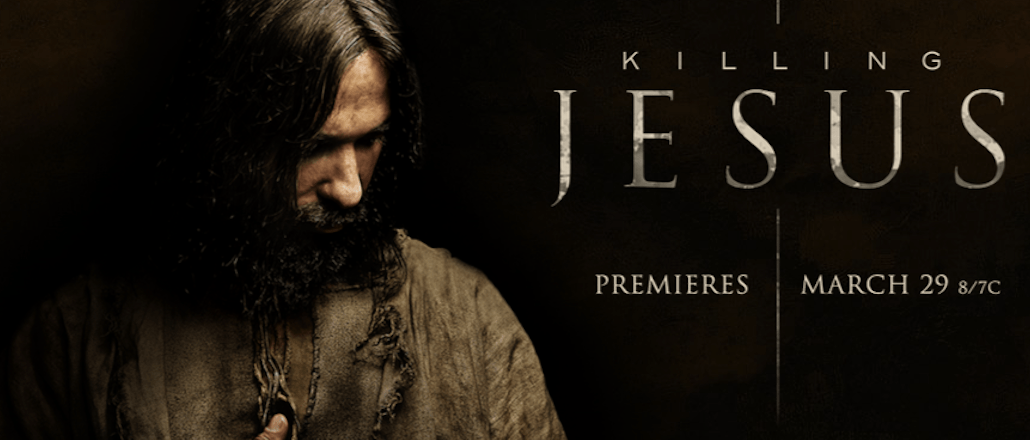Nat Geo’s new ‘Killing Jesus’ microsite takes the crucifixion interactive

National Geographic Channel is banking on “Killing Jesus,” its docudrama adaptation of Bill O’Reilly’s bestselling book. To promote the movie’s debut on March 29, the network has unveiled an immersive, interactive website supporting its latest documentary about the life of Jesus, “Killing Jesus.”
Designed by digital agency Mullen, the website builds on the “greatest story ever told” by providing an interactive experience with multiple points of view on the life of Jesus. Evoking the Rashomon Effect, it lets visitors view the story from three different perspectives, each posing the question of whether Jesus was the son of God, son of man or a just a threat to Roman rule.
“This is a story that has been told millions and millions of times,” Joe Palasek, associate creative director and technologist at Mullen. “So we had to tell it in an innovative way, not just from a narrative standpoint but technologically too.”
The site is organized into eight chapters, each of which reflect the pivotal moments in his life: from his birth to his rise as a prophet, his challenges from enemies to the Last Supper and ultimately his trial and crucifixion. Each chapter contains three to four key illustrations that can be explored through the three different viewpoints, each of which is symbolized by a different crown.
For instance, users can select the option to don a crown of thorns in order to witness Jesus’ crucifixion from Jesus’ own perspective and that of his followers. Or they can choose to see it from the point of view of the Jewish high priests of the time. Lastly, they can select the crown of laurels, which provides the Roman political perspective.

“People expect authentic, in-depth content from the National Geographic Channel,” Matt Zymet, executive director of digital media and digital content at the National Geographic Channel, told Digiday. “This lets us tell the same story we do in film but is a unique storytelling experience for digital platforms.”
French illustrator Bastien Lecouffe Deharme has hand-drawn illustrations for each chapter (3,080 in all), which merge seamlessly into scrollable panoramas. And for those users who still can’t get enough, they can also explore expanded timelines that feature bonus archaeological, historical and sociological content.
The National Geographic Channel is hoping to replicate the success of interactive digital campaigns it has done to support its previous historical snuff films, like the digital experiences “Killing Lincoln” and the multi-Cannes-Lion-winning “Killing Kennedy,” not to mention “Live From Space.”
“This a great formula for these kinds of series,” Zymet said. “It lets us cast a wide net and reach out to many different sections of the audience.”
While this campaign may get more eyeballs, it might receive its own share of flak — just as the book had. Theology professor Robert M. Price, for instance, had called it a work of fiction in a 2014 Slate article, likening it to Mel Gibson’s controversial 2004 film “The Passion of the Christ.”
“Both are exhibitions of popular piety aimed at reinforcing believers’ faith and stilling their doubts by providing a real-seeming illusion about the myths and legends of the gospels,” he wrote.
The film might also ruffle up some conservative feathers, for the lead actor is Haaz Sleiman — a Lebanese-American Muslim actor. There has already been some buzz on Twitter, ahead of the film’s premiere.
Yikes! Muslim actor plays Christ in Bill O’Reilly’s “Killing Jesus” movie |https://t.co/c48WhtemnZ #KillingJesus
— Applied Apologetics (@Apologetics2020) March 6, 2015
But the network is going all out.
There is also a secondary film microsite featuring original articles on a variety of topics, including Jesus in popular culture, the missing years of his life and what happened to the apostles. It also has behind-the-scenes videos from the film, photo galleries, deleted scenes and and Q&As with the cast.
Nat Geo is also running a campaign called “Killing With Kindness,” inspired by Jesus’ encouragement for people to be kind to each other in which it is highlighting organizations that help to spread kindness in the world with the hashtag #killingwithkindness.
More in Marketing

Why the New York Times is forging connections with gamers as it diversifies its audience
The New York Times is not becoming a gaming company. But as it continues to diversify its editorial offerings for the digital era, the Times has embraced puzzle gamers as one of its core captive audiences, and it is taking ample advantage of its advantageous positioning in the space in 2024.

Why B2B marketers are advertising more like consumer brands to break through a crowded marketplace
Today’s marketing landscape is more fragmented than ever. Like consumer brands, business brands are looking to stand out in a crowded and competitive marketplace, making marketing tactics like streaming ads, influencers and humorous spots more appealing.

As draft puts WNBA in spotlight, the NBA is speeding up ballplayers’ transition to creators
The NBA’s star athletes are its greatest marketing asset.





